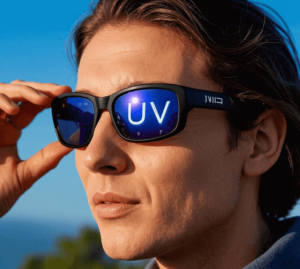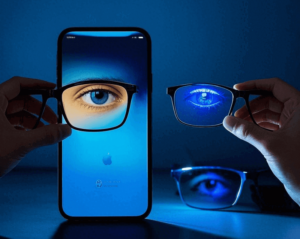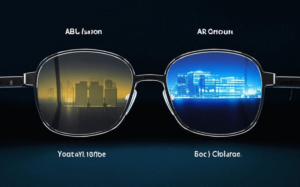In the competitive world of eyewear manufacture, the choice of lens coatings plays a pivotal role in determining the quality, functionality, and overall appeal of the final product. Whether you’re sourcing lenses from a sunglasses manufacturer or working with a glasses factory to create high-quality eyewear, understanding the benefits and trade-offs of various lens coatings can help ensure you’re making a smart investment. This deep dive explores the most valuable lens coatings available, backed by authoritative data, and provides insight into which coatings are truly worth your attention.
- Anti-Reflective (AR) Coating: Enhancing Visual Clarity and Comfort
Anti-reflective (AR) coatings are one of the most popular and essential lens enhancements available today. These coatings, which consist of multiple layers of metal oxide, are designed to reduce reflections on the lens surface. This results in better light transmission, clearer vision, and reduced glare—especially in low-light conditions. AR coatings are highly beneficial for individuals who drive at night or spend significant time on digital screens.
According to a 2023 survey from the American Optometric Association (AOA), 78% of respondents reported improved clarity and comfort with AR-coated lenses when using digital devices. Furthermore, AR coatings can enhance the cosmetic appearance of eyewear by reducing reflections, making lenses nearly invisible. This not only improves aesthetics but also enhances the user’s overall experience.
Why Invest in AR Coating?
- Improved visual clarity, especially in challenging lighting conditions
- Reduced glare from screens, car headlights, and indoor lighting
- Enhanced comfort for digital device users
- Improved appearance of the lenses, making them look cleaner and less reflective
- Scratch-Resistant Coating: Protecting Your Lenses
A scratch-resistant coating is an investment that pays off in durability. Eyewear lenses, especially those made from softer materials like plastic, are prone to scratching from daily wear and tear. A scratch-resistant coating provides a thin, hard layer on the lens surface that makes it more resistant to scratches. While it doesn’t make the lenses scratch-proof, it significantly extends the life of the eyewear.
In eyewear manufacture, this coating is particularly beneficial for lenses made of polycarbonate or high-index materials, which are lighter and thinner but more prone to scratching. According to the Eyewear Manufacturers Association (EMA), the addition of scratch-resistant coatings can increase the lifespan of lenses by up to 50%, reducing the need for replacements.
Why Invest in Scratch-Resistant Coating?
- Increases the durability and lifespan of lenses
- Protects against everyday wear and tear
- Ideal for active users or those with children’s eyewear
- UV Protection Coating: Safeguarding Your Eyes
 UV protection is another critical lens coating that should not be overlooked. Extended exposure to ultraviolet (UV) radiation can lead to serious eye conditions, including cataracts, macular degeneration, and corneal damage. Most high-quality lenses already offer some degree of UV protection, but additional coatings can enhance this protection to 100%.
UV protection is another critical lens coating that should not be overlooked. Extended exposure to ultraviolet (UV) radiation can lead to serious eye conditions, including cataracts, macular degeneration, and corneal damage. Most high-quality lenses already offer some degree of UV protection, but additional coatings can enhance this protection to 100%.
The World Health Organization (WHO) recommends UV-blocking lenses for all eyewear, particularly for people who spend extended periods outdoors. For instance, a study published by the American Academy of Ophthalmology revealed that proper UV protection could reduce the risk of developing cataracts by up to 40%.
Why Invest in UV Protection Coating?
- Provides 100% protection against harmful UV rays
- Prevents long-term damage to the eyes and helps reduce the risk of cataracts
- Essential for outdoor enthusiasts, sports enthusiasts, and those in sunny climates
- Anti-Fog Coating: Ideal for Active Lifestyles
Anyone who wears glasses knows the frustration of fogged-up lenses. Anti-fog coatings, which are applied to the surface of the lens, prevent moisture from condensing, keeping the lens clear even in humid or temperature-variable environments. This coating is especially valuable for individuals engaging in physical activities such as cycling, running, or skiing.
The global demand for anti-fog eyewear has risen, particularly in the wake of increased mask-wearing during the COVID-19 pandemic, with eyewear manufacturers reporting a 35% increase in sales of anti-fog lenses. Anti-fog coatings are also effective for those working in environments that involve sudden temperature changes, like kitchen staff or medical professionals.
Why Invest in Anti-Fog Coating?
- Prevents fogging, improving visual clarity
- Ideal for sports enthusiasts, healthcare workers, and active individuals
- Provides enhanced comfort in fluctuating environmental conditions
- Blue Light Blocking Coating: Reducing Eye Strain in the Digital Age
 In the digital era, more people are spending hours in front of screens, leading to an increase in eye strain, fatigue, and disrupted sleep patterns. Blue light blocking coatings filter out harmful blue light emitted from digital devices, thereby reducing eye strain and potentially improving sleep quality.
In the digital era, more people are spending hours in front of screens, leading to an increase in eye strain, fatigue, and disrupted sleep patterns. Blue light blocking coatings filter out harmful blue light emitted from digital devices, thereby reducing eye strain and potentially improving sleep quality.
A study by the National Eye Institute (NEI) found that prolonged exposure to blue light can lead to digital eye strain, affecting nearly 70% of the population. Blue light coatings are particularly beneficial for individuals who work in front of screens for extended periods, offering a solution to reduce discomfort and improve productivity.
Why Invest in Blue Light Blocking Coating?
- Reduces digital eye strain, improving comfort during extended screen time
- May help mitigate sleep disturbances caused by blue light exposure
- Beneficial for office workers, students, and anyone using digital devices for long hours
- Photochromic Coating: Adaptable Lenses for Dynamic Lifestyles
Photochromic lenses, also known as transition lenses, automatically adjust their tint in response to changes in ambient light. These lenses darken when exposed to UV light and clear up when indoors. They offer the convenience of not needing separate prescription sunglasses and are ideal for individuals who frequently move between indoor and outdoor environments.
According to a report from Luxottica, nearly 45% of eyewear consumers prefer photochromic lenses for their versatility and convenience. These lenses provide UV protection, adapt to varying lighting conditions, and eliminate the need for carrying two pairs of glasses.
Why Invest in Photochromic Coating?
- Provides convenience by adapting to changing light conditions
- Offers both prescription lenses and sunglasses functionality in one
- Protects eyes from harmful UV rays while outdoors
Conclusion: Which Lens Coatings Are Worth Investing In?
Investing in the right lens coatings is a key factor in creating high-quality, functional eyewear that meets the needs of diverse consumers. From anti-reflective coatings that enhance clarity to UV protection and anti-fog coatings, these additions offer tangible benefits to users in terms of comfort, durability, and eye health.
When working with eyewear manufacturers or sourcing products from a glasses factory or sunglasses manufacturer, it’s important to consider the target audience and their specific needs. Whether you’re looking to cater to active individuals, digital device users, or outdoor enthusiasts, the right lens coating can significantly improve the end-user experience.
In the ever-evolving eyewear industry, the demand for high-quality coatings continues to rise. As consumers become more informed about the advantages of these coatings, their expectations will shape the future of eyewear manufacturing and innovation.

